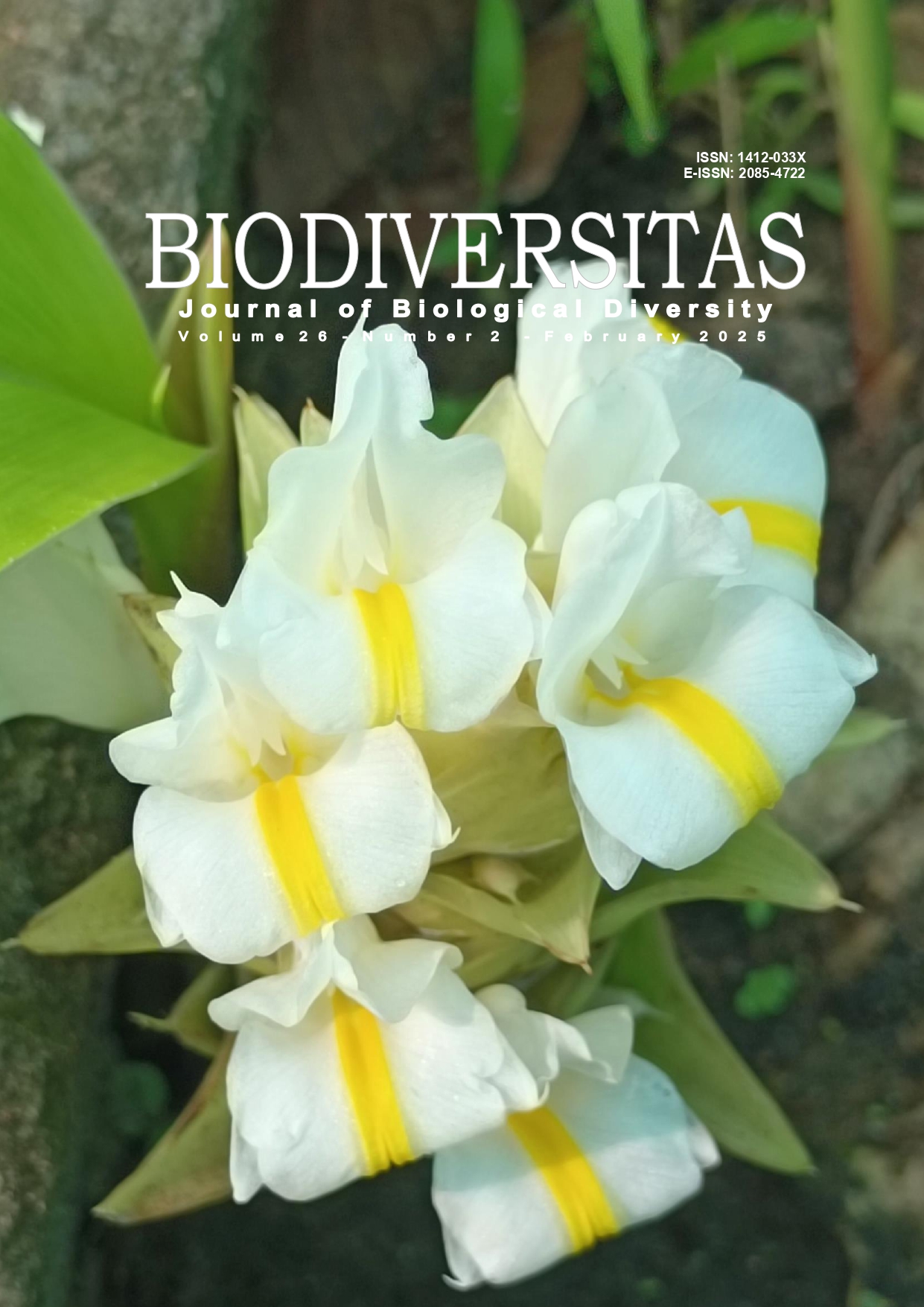Morphology and molecular studies to reveal the taxonomic status of endemic fish Barbonymus belinka of Lake Singkarak, West Sumatra, Indonesia
##plugins.themes.bootstrap3.article.main##
Abstract
Abstract. Salis VM, Tjong DH, Syaifullah, Dahelmi, Aadrean, Roesma DI. 2025. Morphology and molecular studies to reveal the taxonomic status of endemic fish Barbonymus belinka of Lake Singkarak, West Sumatra, Indonesia. Biodiversitas 26: 536-550. Species identification is very important in taxonomy and conservation. There are some cases where the distinctive morphological characters of a species show minor differences; for example, the Balingka fish (Barbonymus belinka), endemic to Lake Singkarak, West Sumatra, Indonesia and the Kapiek fish (Barbonymus schwanefeldii). The local community around Lake Singkarak gives two names to the Balingka fish based on size (the larger ones are called Balingka, and the smaller ones are called Kapiek), it can affect the taxonomy and validity of biodiversity data. The lack of comprehensive information on B. belinka has led to the species being classified as Data Deficient (DD) on the IUCN Red List. Additionally, the presence of a DNA barcode for Balingka fish in the BOLD system, listed under a different species name than in GenBank (NCBI), raises concerns about potential species misidentification and data inconsistencies. A thorough taxonomy review of Balingka fish (B. belinka) is necessary, utilizing both morphological and molecular approaches. This study aims to clarify the taxonomy and investigate the phylogenetic relationships of the two fish species through morphological and molecular analyses, utilizing Cytochrome Oxidase-I and Cytochrome b gene sequences. Individual samples were used for morphological identification, while liver tissue was used for molecular analysis. The results showed morphometric variations, but meristic traits confirmed that both fishes belong to the same species, B. schwanefeldii. Molecular analysis shows a genetic distance of 0-1.4% for Cytochrome Oxidase-I gene and 0-2.3% for Cytochrome b gene, indicating the same species. Two specific bases at 585 bp of the Cytochrome Oxidase-I gene and four specific bases at 599 bp of the Cytochrome b gene are also found unique to B. schwanefeldii from Lake Singkarak, suggesting that these two fishes may represent the same species.
##plugins.themes.bootstrap3.article.details##
Most read articles by the same author(s)
- DEWI IMELDA ROESMA, DJONG HON TJONG, SYAIFULLAH, DYTA RABBANI AIDIL , DNA barcoding of Mugilogobius mertoni and M. rambaiae from Siberut and Enggano Islands, the small outermost islands of Sumatra, Indonesia , Biodiversitas Journal of Biological Diversity: Vol. 26 No. 1 (2025)
- DEWI IMELDA ROESMA, PUTRA SANTOSO, Morphological divergences among three sympatric populations of Silver Sharkminnow (Cyprinidae: Osteochilus hasseltii C.V.) in West Sumatra , Biodiversitas Journal of Biological Diversity: Vol. 12 No. 3 (2011)
- DEWI IMELDA ROESMA, DJONG HON TJONG, DYTA RABBANI AIDIL, FURQAN DWIKI LINTANG PRAWIRA, ANDRI SAPUTRA, Freshwater fish diversity from Siberut Island, a small island in the western part of Sumatra, Indonesia , Biodiversitas Journal of Biological Diversity: Vol. 25 No. 2 (2024)
- CYNTHIA ERICCA, DJONG HON TJONG, DEWI IMELDA ROESMA, WILSON NOVARINO, SYAIFULLAH, MUHAMMAD NAZRI JANRA, AADREAN, Short Communication: Taxonomic status of Great Argus (Argusianus argus) Sumatra and Borneo based on cytochrome B gene , Biodiversitas Journal of Biological Diversity: Vol. 23 No. 9 (2022)
- UMMI KURNIA PUTRI, DEWI IMELDA ROESMA, DJONG HON TJONG, Systematics molecular investigation of Palo fish (Betta sp.) in the Harau Valley, West Sumatra using the COI gene , Biodiversitas Journal of Biological Diversity: Vol. 26 No. 2 (2025)


 https://orcid.org/0000-0002-4743-9964
https://orcid.org/0000-0002-4743-9964